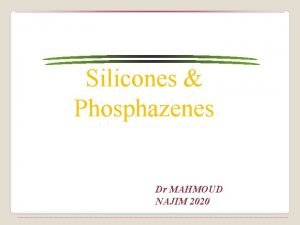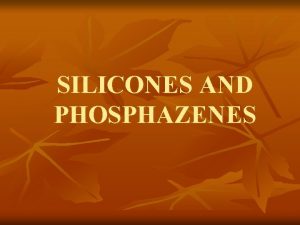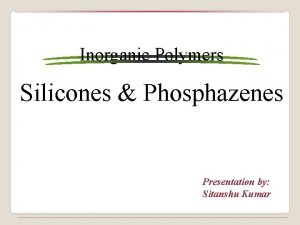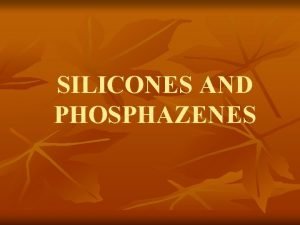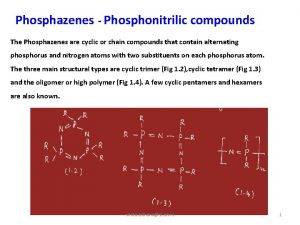SILICONES AND PHOSPHAZENES Silicones and phosphazenes are examples









- Slides: 9

SILICONES AND PHOSPHAZENES

+ Silicones and phosphazenes are examples of inorganic Polymers. Inorganic elements can have different valencies Than carbon and therefore different numbers of side groups may be attached to a skeletal atom. This will affect the flexibility of polymers, their ability to react with chemical reagents and interactions with other polymers. Among inorganic polymers, silicones and phosphazenes are two important class of polymers with high commercial potential.

SILICONES Silicones are polymeric organosilicone derivative containing Si-O-Si linkages. These contain alternate silicon and oxygen atoms in which the silicone atoms are joined to organic groups. these are also called Polysiloxanes. These have the general formula (R 2 Si. O)n

These may be linear , cyclic or cross linked polymers. They Have high thermal stability and are also called high Temperature polymers.

FACTORS AFFECTING THE NATURE OF SILICONE POLYMERS 1) 2) 3) 4) 5) The nature of alkyl and aryl groups. The distribution of organic groups. The type and proportions of structural units. The extent of cross linking. The length of the chain

PROPERTIES OF SILICONES Thermal stability. The silicones polymers are Highly stable towards heat. They exhibit thermal stability up to 200 to 300°C and have low glass transition temperature. Chemical Stability. The silicones are stable towards the chemical reagents Some electron deficient salts may result into cleavage of Si-O as well as. Si-C bonds. These are quite stable to attack by oxygen

Chemical properties. The siloxanes bond in silicones may be cleaved by grignard reagent, alkyl lithium and lithium aluminium hydride


